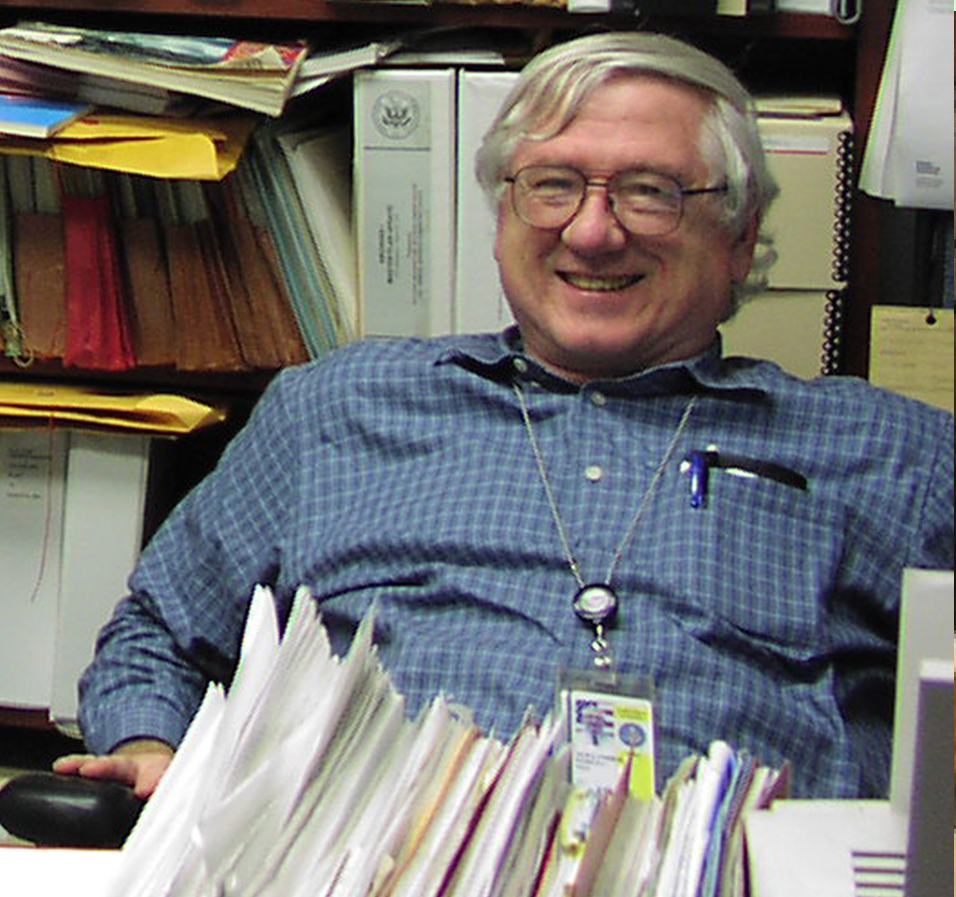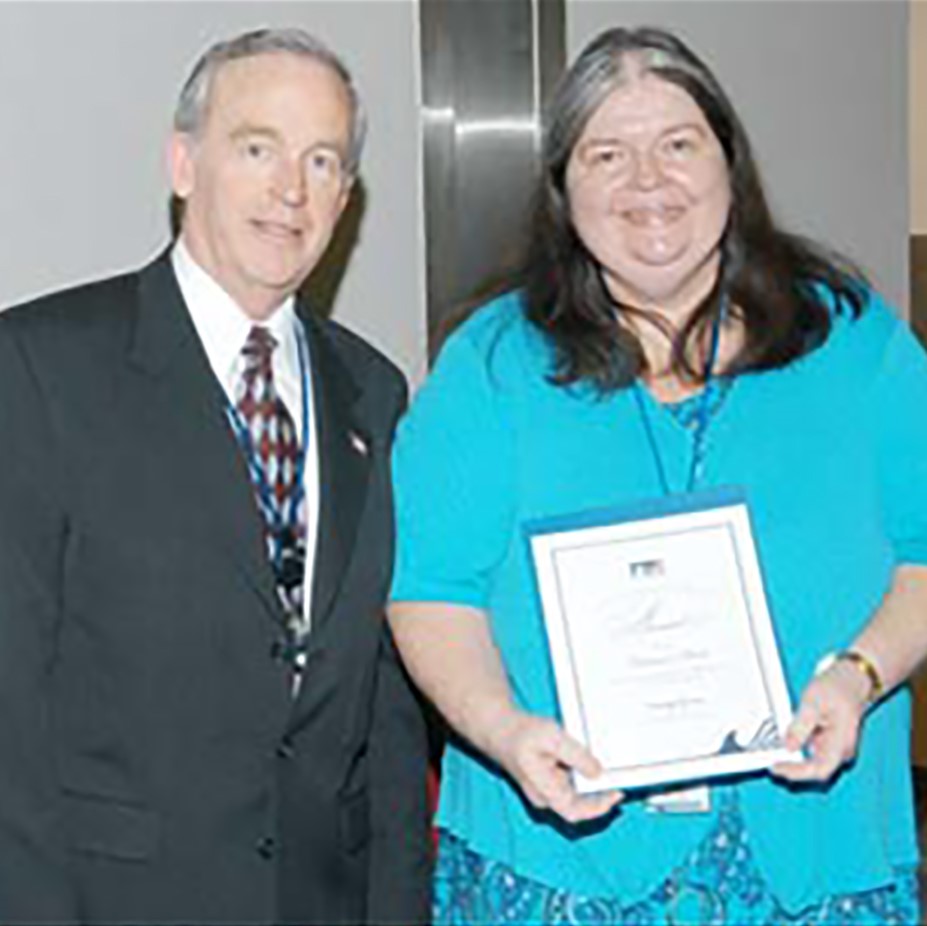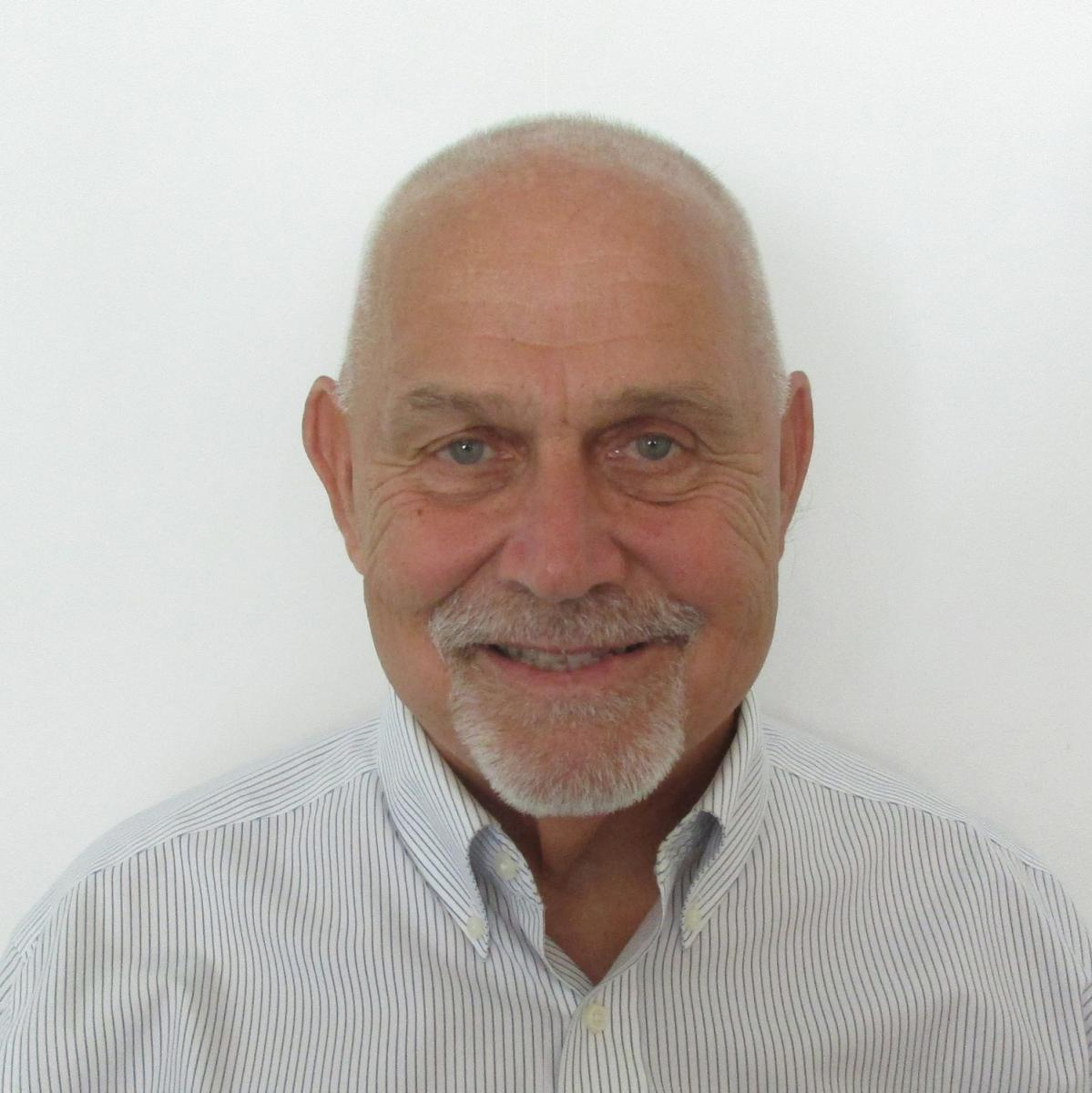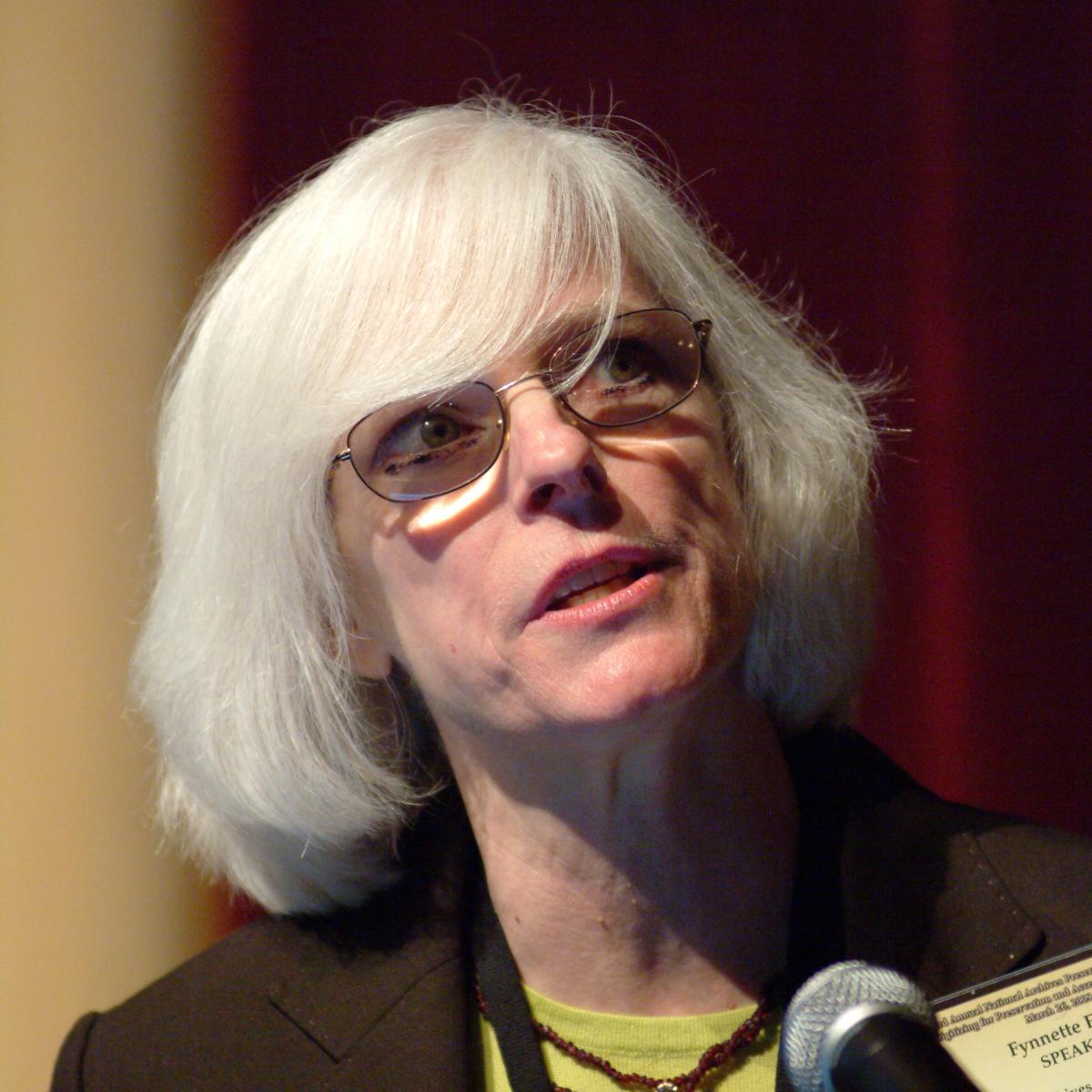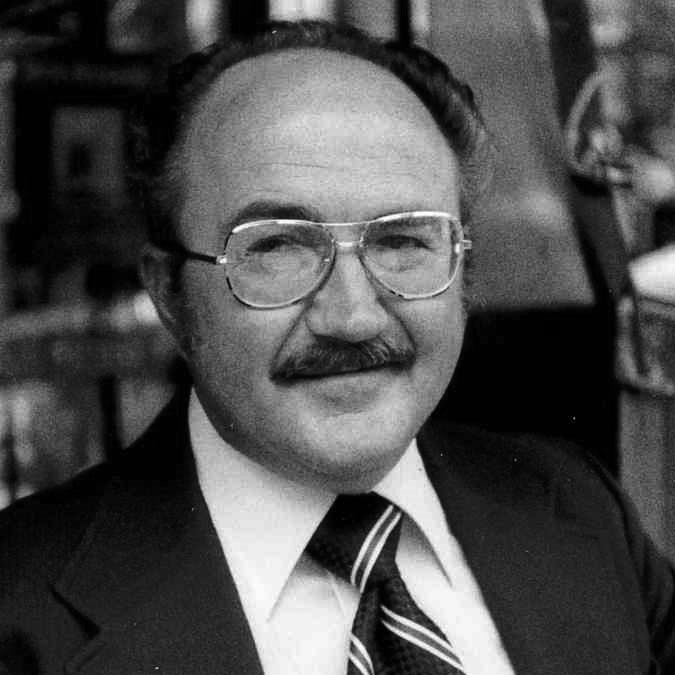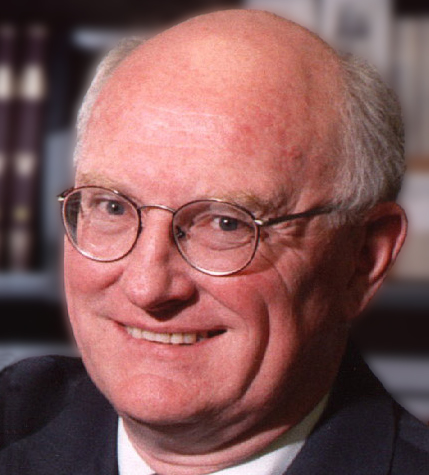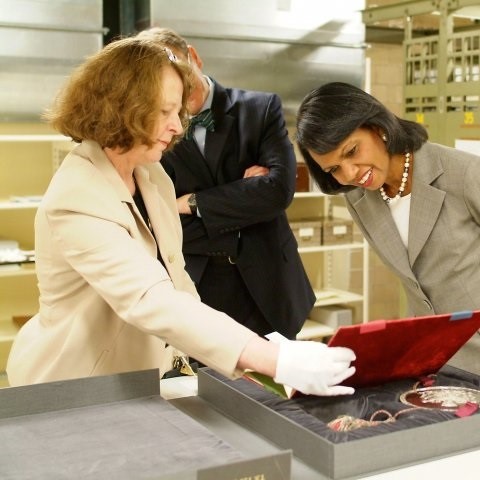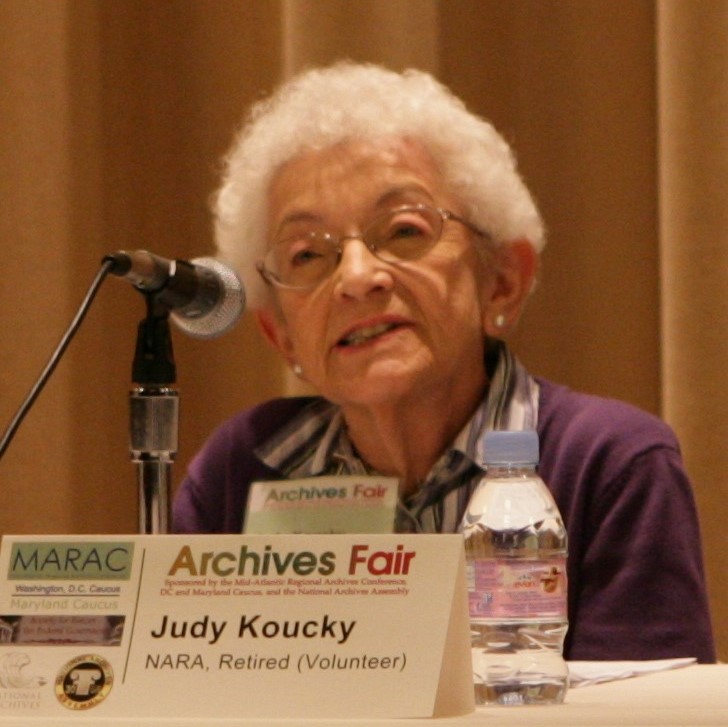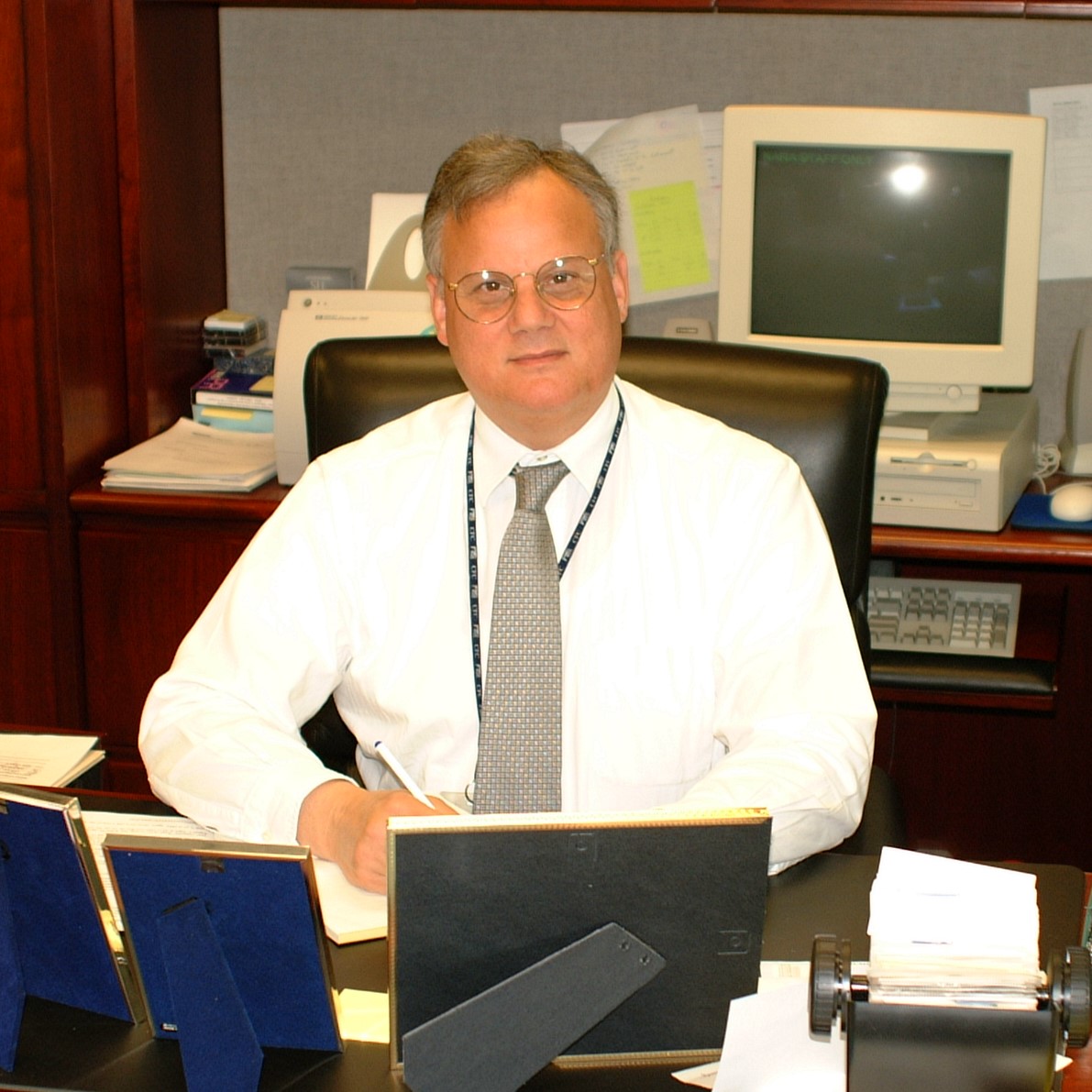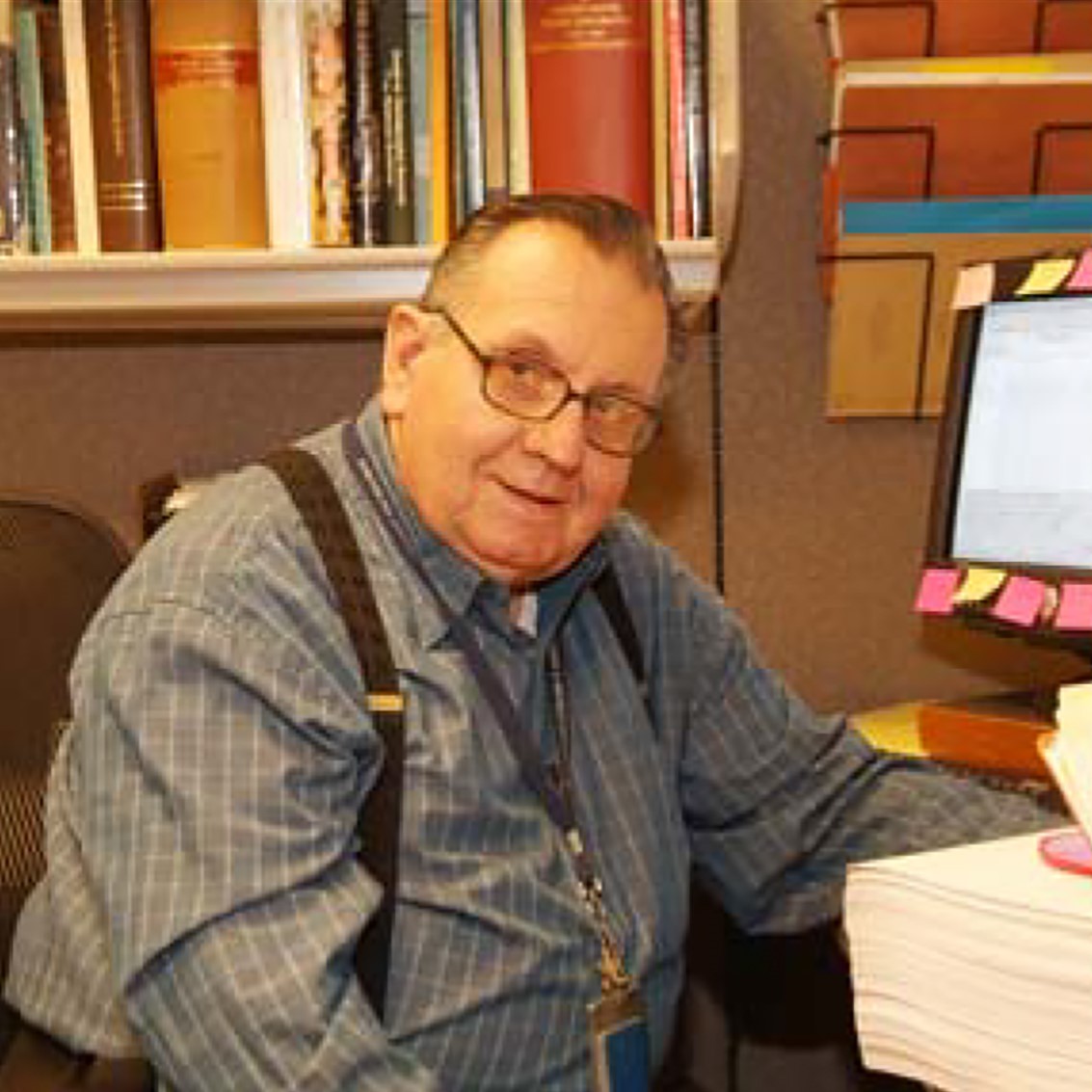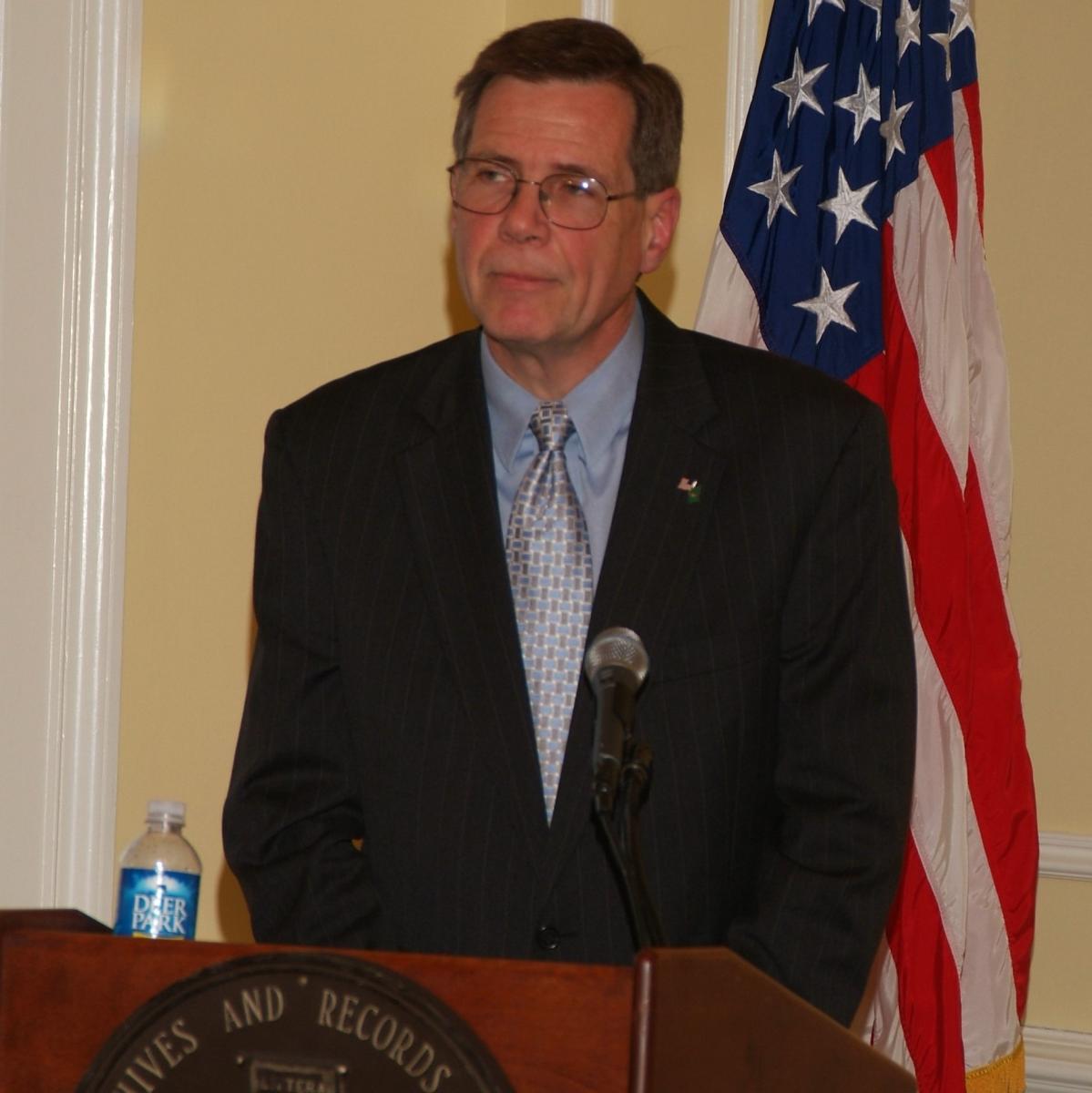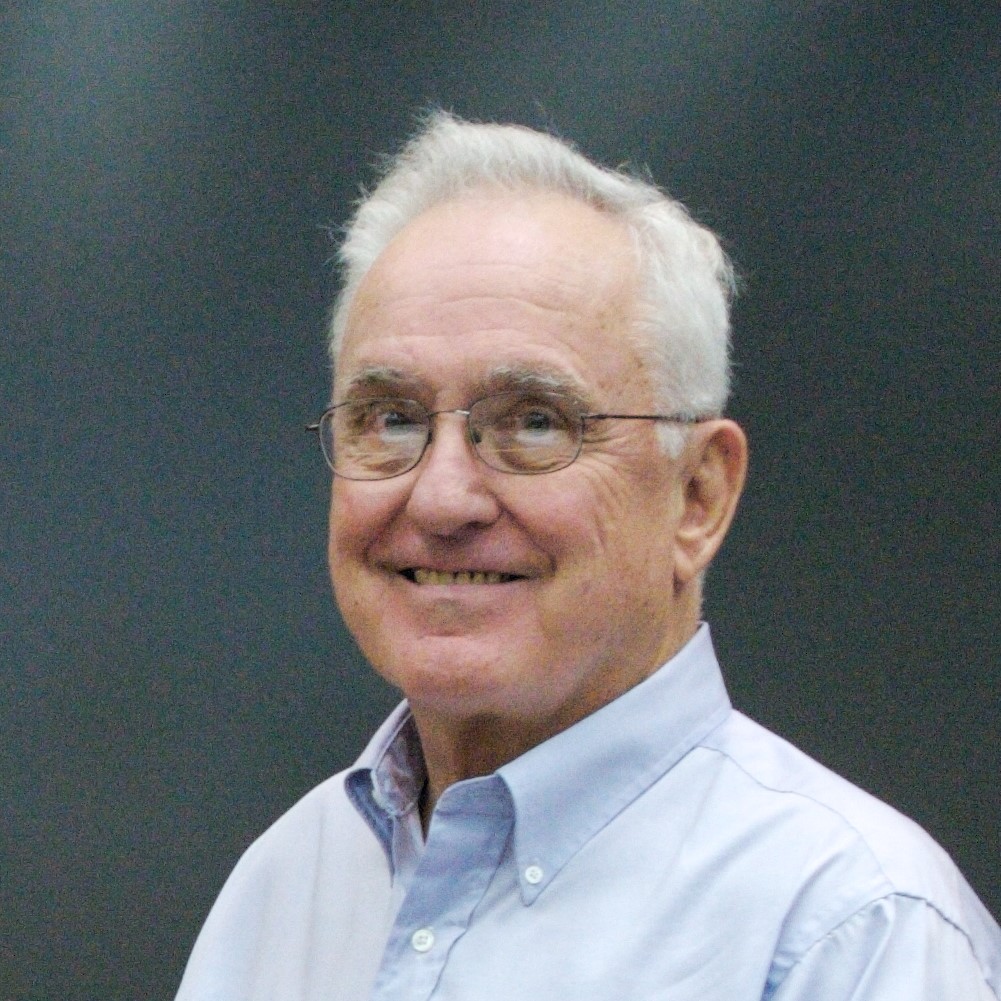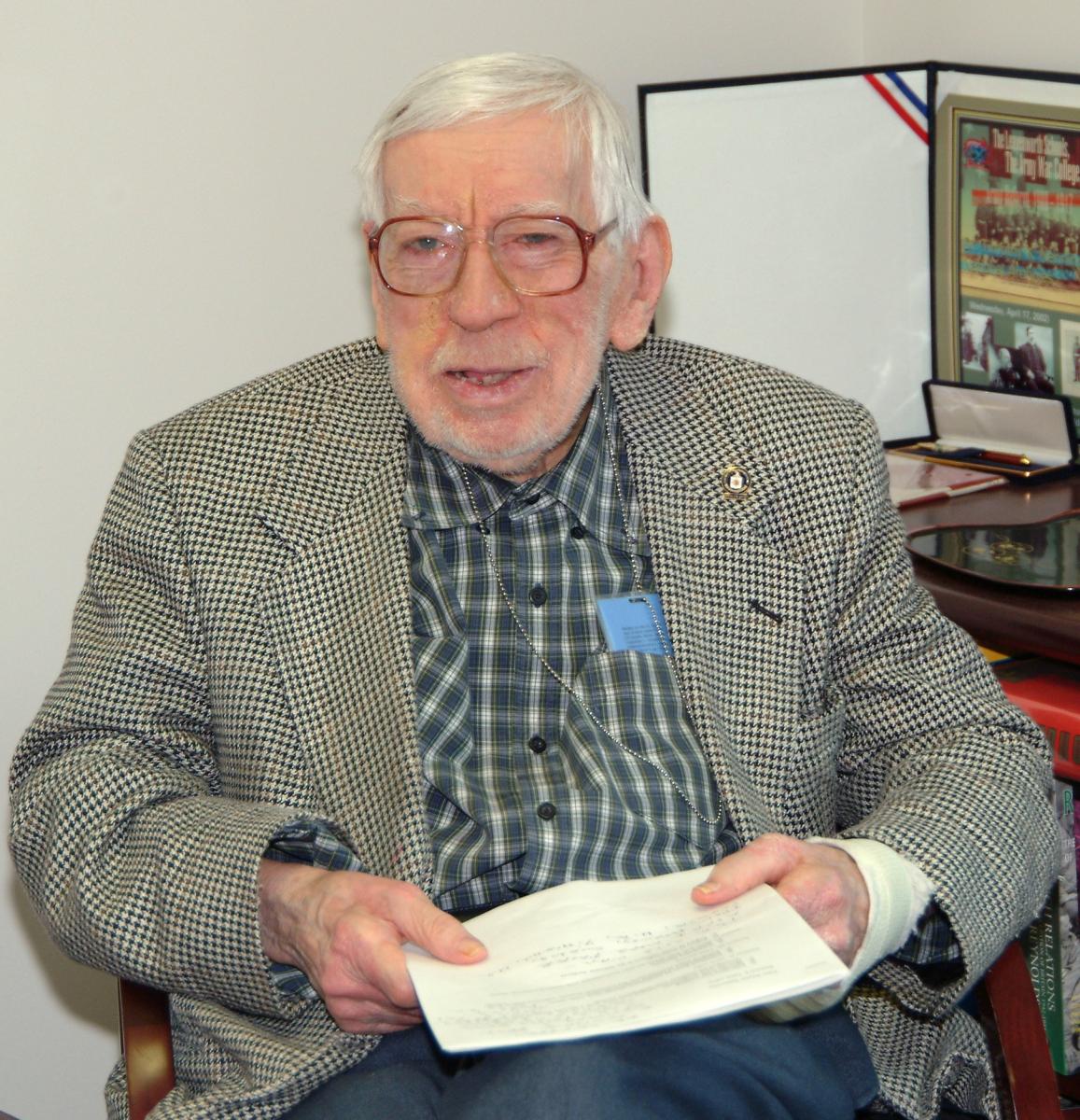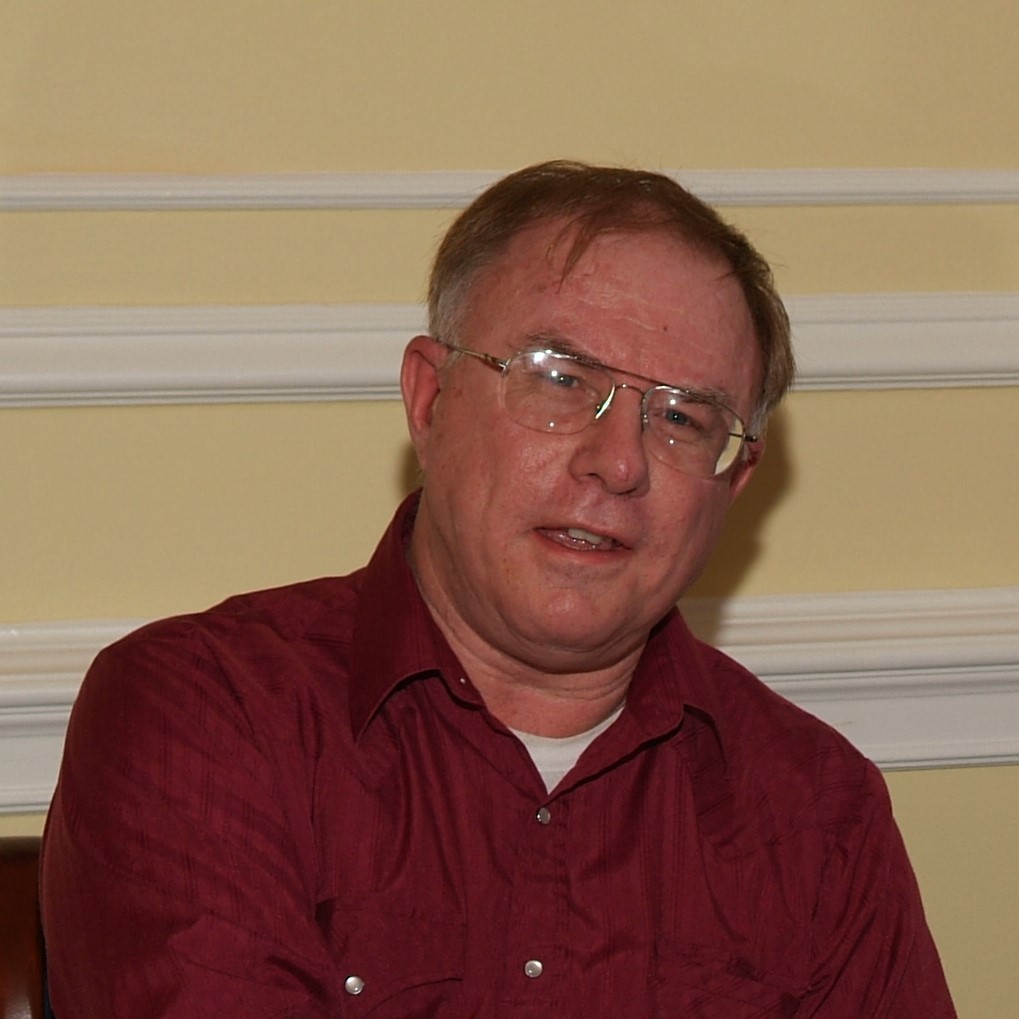
National Archives Assembly's Legacy Project
From 2005–2014 the National Archives Assembly—a professional organization of past and present National Archives employees—undertook the Legacy Project. The project collected oral history interviews of nearly 40 NARA staff members which were donated to the National Archives. Please note these transcripts were made by Assembly volunteers and may contain minor spelling and editorial errors.
Disclaimer: The views presented in these oral history interviews are those of the participants and not of the National Archives or the U.S. Government.
Pat Alexander joined the National Archives in 1992 as chief of facilities at the National Archives Building in Washington, DC. He served as project manager of the National Archives Building renovation (1999–2005) and ultimately became the Deputy Assistant Archivist for Administration. Pat retired from the National Archives in October 2006. His interview was primarily conducted to capture some of NARA’s institutional memory regarding the renovation of the National Archives Building. The interview also includes substantial background information on the National Archives Building’s renovation project.
Barbara O'Neil Brett started with the National Archives in February 1975 as an archives technician in the Declassification Division. During the interview, Brett discusses her career with other agencies in the federal government and her return to NARA. She also talks about her experience working in the federal government as a woman; and her work in Declassification Division, Machine-Readable Archives Division, and in Customer Service.
In his oral history, Thomas Elton Brown discusses his career which started in 1976 with the Machine-Readable Branch and then his time in administrative staff. He describes changes to the Career Intern Development System (CIDS) program as well as training and qualifications for archivists. He also discusses the Electronic and Special Media Records Services Division.
Anne Eales originally came to the National Archives as a part-time employee in the Still Pictures Branch. She soon moved to the Archival Publications staff as a publications specialist where she worked on a number of projects including the Guide to Genealogical Research in the National Archives and the Guide to Federal Records in the National Archives. She also worked on a major description project for RG 64, Records of the National Archives. Eales retired from the National Archives in 2006 after 14 years of service.
Fynnette Eaton was the Change Management Officer for the Electronic Records Archives Program (ERA) at the National Archives. She was interviewed in 2008.
Frank Evans first came to the National Archives in 1963. He held numerous positions within the National Archives, in addition to working eight years for UNESCO (1976–1984). Evans returned to the National Archives in 1984 and retired in 1995 as Deputy Assistant Archivist for Records Administration. He was interviewed in 2006. Frank Evans passed away on November 30, 2021.
Max Evans was the Executive Director of the National Historical Publications and Records Commission (NHPRC) from 2003–2007. Previously he served in positions at the Wisconsin Historical Society and the Utah State Historical Society. In his oral history, Evans discusses his time at the National Archives as head of the NHPRC.
Meyer Fishbein worked at the National Archives for nearly 40 years, from 1940–1980 with a break when he served in World War II. Fishbein is most notable for recognizing the value of machine-readable records, now known as electronic records. Meyer Fishbein passed away on January 31, 2017.
Cynthia “Cindi” Fox began her career at the National Archives in January 1979 as a cooperative education (COOP) intern and became a permanent employee in January 1980 as a Career Intern Development System (CIDS) archivist. She worked as a reference and projects archivist and appraiser in several departments, then held various management positions. She retired in January 2010 as Chief of the Archives I Textual Unit. In her interview, Fox discusses her career and how the National Archives changed during her tenure.

Rose Gabel started at the National Archives in 1970 doing secretarial work in the Public Affairs Office. In her interview she discusses changes in secretarial work and the differences between Archives I and Archives II. Gabel also discusses the 9/11 terrorist attacks and the riots in Washington DC in 1968.
Lee Gladwin worked at the National Archives from 1990–2009. He spent his entire NARA career working in the Center for Electronic Records, later renamed the Electronic and Special Media Records Services Division (NWME). In his oral history, Gladwin talks about his career at the National Archives working with electronic records. Gladwin passed away on November 27, 2022.
In her oral history, Judy Koucky talks about her early career with the Society of American Archivists. She started at the National Archives in 1974. She discusses her work in Record Group administration including decisions about Record Groups and breaking Record Groups apart to form separate ones.
Michael Kurtz started at the National Archives in 1974 in Records Declassification. In his oral history, he discusses the formation of the National Declassification Center, work at Suitland, the move to Archives II, the independence of that National Archives from GSA, and the differences in administration between various Archivists of the United States. Michael Kurtz passed away on December 17, 2022.
Robert Kvasnicka started at the National Archives in 1957. In his oral history, Kvasnicka discusses the creation of guides, preliminary inventories, and the Indian-White Relations Conference held at the National Archives. He also discusses his experience describing records and providing reference services.
J. William Leonard was the third Director of the Information Security Oversight Office (ISOO). In his oral history, Leonard discusses records withdrawn from the National Archives, and the protocols put in place for agencies to withdraw records. He also discusses his career at the Department of Defense and classification of records, especially in relation to post-9/11 Commission records.
Mike McReynolds was at the National Archives for 32 years, working in reference and ending his career as the Deputy Director of the Center for Legislative Archives. In his oral history interview, McReynolds discusses training, FBI records, and the start of the Legislative Division.
In his oral history interview, Tim Mulligan discusses his 34-year career at the National Archives including his work on the Captured German Record materials.
Virginia Purdy started at the National Archives as the Director of Popular Publications and Exhibitions in the Education Programs department. In her oral history, Purdy discusses the Women’s History Conference, the National Archives Assembly, and the Society of American Archivists.
John Taylor was a long-time archivist who started his career at the National Archives in 1945 in the War Records Office becoming the de facto expert on World War II military intelligence records. He worked at the National Archives for 63 years until his death in 2008.
Adrienne C. Thomas began her career with the National Archives in 1970 as an archivist trainee in the Office of Presidential Libraries. Thomas subsequently served in several capacities, eventually becoming the Deputy to the Assistant Archivist for Administration. From December 2007 to December 2008 Thomas was Deputy Archivist of the United States and from December 2008 to November 2009 she served as Acting Archivist of the United States. After nearly 41 years of service, Thomas retired from the National Archives on April 1, 2011. Adrienne Thomas passed away on March 29, 2021.
Richard Wood began working for the Washington National Records Center in Suitland, Maryland in 1977 for the General Archives Division. In his oral history interview he discusses projects, records appraisal work, and helping to establish and formalize accessioning procedures.
